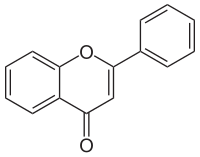
Photo from wikipedia
The R2R3-MYB family is one of the largest plant transcription factor (TF) families playing vital roles in defense, plant growth, and secondary metabolism biosynthesis. Although this gene family has been… Click to show full abstract
The R2R3-MYB family is one of the largest plant transcription factor (TF) families playing vital roles in defense, plant growth, and secondary metabolism biosynthesis. Although this gene family has been studied in many species, isoflavonoid biosynthesis-related R2R3-MYB TFs in Callerya speciosa (Champ. ex Benth.) Schot, a traditional Chinese medicinal herb, are poorly understood. Here, a total of 101 R2R3-MYB TFs were identified from C. speciosa transcriptome dataset. 25 clades divided into five functional groups were clustered based on the sequence similarity and phylogenetic tree. Conserved motifs and domain distribution, expression patterns, and coexpression networks were also employed to identify the potential R2R3-MYB TFs in the regulation of isoflavonoid biosynthesis. In silico evaluation showed that the deduced R2R3-CsMYB proteins contain highly conserved R2R3 repeat domain at the N-terminal region, that is the signature motif of R2R3-type MYB TFs. Eight potential TFs (CsMYB17, CsMYB36, CsMYB41, CsMYB44, CsMYB45, CsMYB46, CsMYB72, and CsMYB81) had high degrees of coexpression with four key isoflavonoid biosynthetic genes (CsIFS, CsCHS7, CsHID-1, and CsCHI3), in which CsMYB36 as a potential regulator possessed the highest degree. HPLC analysis showed that formononetin and maackiain contents were significantly increased during the development of tuberous roots, which might be controlled by both related R2R3-CsMYBs and structural genes involved in the isoflavonoid biosynthesis pathway. The transcriptome data were further validated by reverse transcription real-time PCR (RT-qPCR) analysis, and similar expression profiles between TFs and key structural genes were identified. This study was the first step toward the understanding of the R2R3-MYB TFs regulating isoflavonoid biosynthesis in C. speciosa. The results will provide information for further functional analysis and quality improvement through genetic manipulation of these potential R2R3-CsMYB genes in C. speciosa.
Journal Title: International Journal of Genomics
Year Published: 2021
Link to full text (if available)
Share on Social Media: Sign Up to like & get
recommendations!